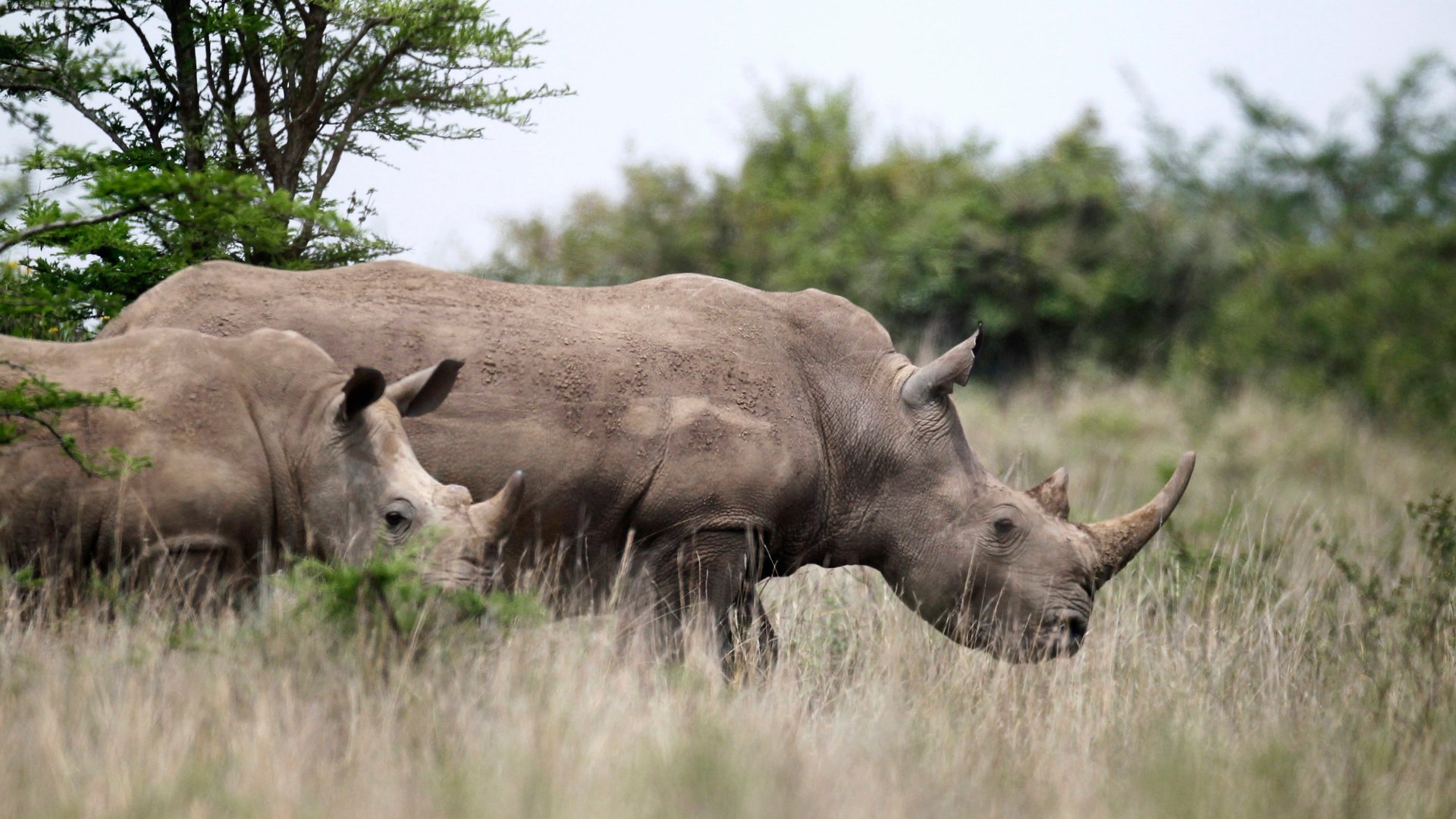2014 was a record year for rhino poaching
This year rhino poaching has increased significantly in South Africa and Namibia, part of a worsening trend. Since 2007 there has been a 1,000% increase in poaching in South Africa alone. An average of twelve rhinos were poached in South Africa between 2000 and 2007 per year; that number ballooned to 1,255 in 2014.


This year rhino poaching has increased significantly in South Africa and Namibia, part of a worsening trend. Since 2007 there has been a 1,000% increase in poaching in South Africa alone. An average of twelve rhinos were poached in South Africa between 2000 and 2007 per year; that number ballooned to 1,255 in 2014.
Africa is home to two of the five rhino species: the white rhino and the black rhino. The white rhino, which conservation organizations deem as threatened, has an estimated population of 20,000, while the critically endangered black rhino numbers around 5,000. Including the three other species of rhino there are approximately 29,000 rhinos worldwide. With an estimated 20,000 black and white rhinos, South Africa is home to almost 70% of all rhinos. The remainder of Africa’s rhinos are scattered throughout southern and east Africa.
Just since January, 393 rhinos have been poached in South Africa—an 18% increase from the same time period in 2014. In neighboring Namibia, alarmingly, 60 rhinos have been poached since January (only 24 were poached in 2014). The rhino population in Zimbabwe is believed to have decreased by nearly 30% in the last three years, having lost two hundred rhinos since 2012. Meanwhile, Mozambique, the country blamed for much of South Africa’s poaching problem, saw its reintroduced rhino population disappear in 2013.
If this trend continues, African countries will lose one of their most iconic animals and a keystone species. Indeed, if poaching continues at an 18% increase in South Africa, the number of poached rhinos in 2015 will reach 1,480, and will far exceed the number of rhinos being born.
Fortunately, governments and local NGOs are taking steps to address the increase in rhino poaching. The group Rhinos Without Borders plans to move one hundred rhinos from South Africa to Botswana, they have already relocated ten. As Botswana has seen a sixfold increase in its rhino population over the last ten years, going from 26 to 153 animals, it seems to be one of the few safehavens left for rhinos in Africa. Botswana has been successful at protecting its animal populations because the government has prioritized its conservation programs, going so far as to deploy its military to protect its rhino population.
In search of other ways of keeping the rhino population safe, others have suggested more radical solutions. In fact, a conservation group recently proposed to move a thousand rhinos from South Africa to Texas. Though criticized by many conservationists as impractical, and seen by some as a move spurred by big game hunters, the Texas proposal does highlight the need for a drastic response.
However, the best way for African governments to save the rhino is through prioritizing conservation efforts that include education and community outreach. While not all African governments have the resources to commit their military to the protection of these animals, they can emphasize the biological, ecological, and financial costs that losing the rhino population would have on local communities. African governments can only stop the poaching crisis once their communities are committed to the fight against poaching.